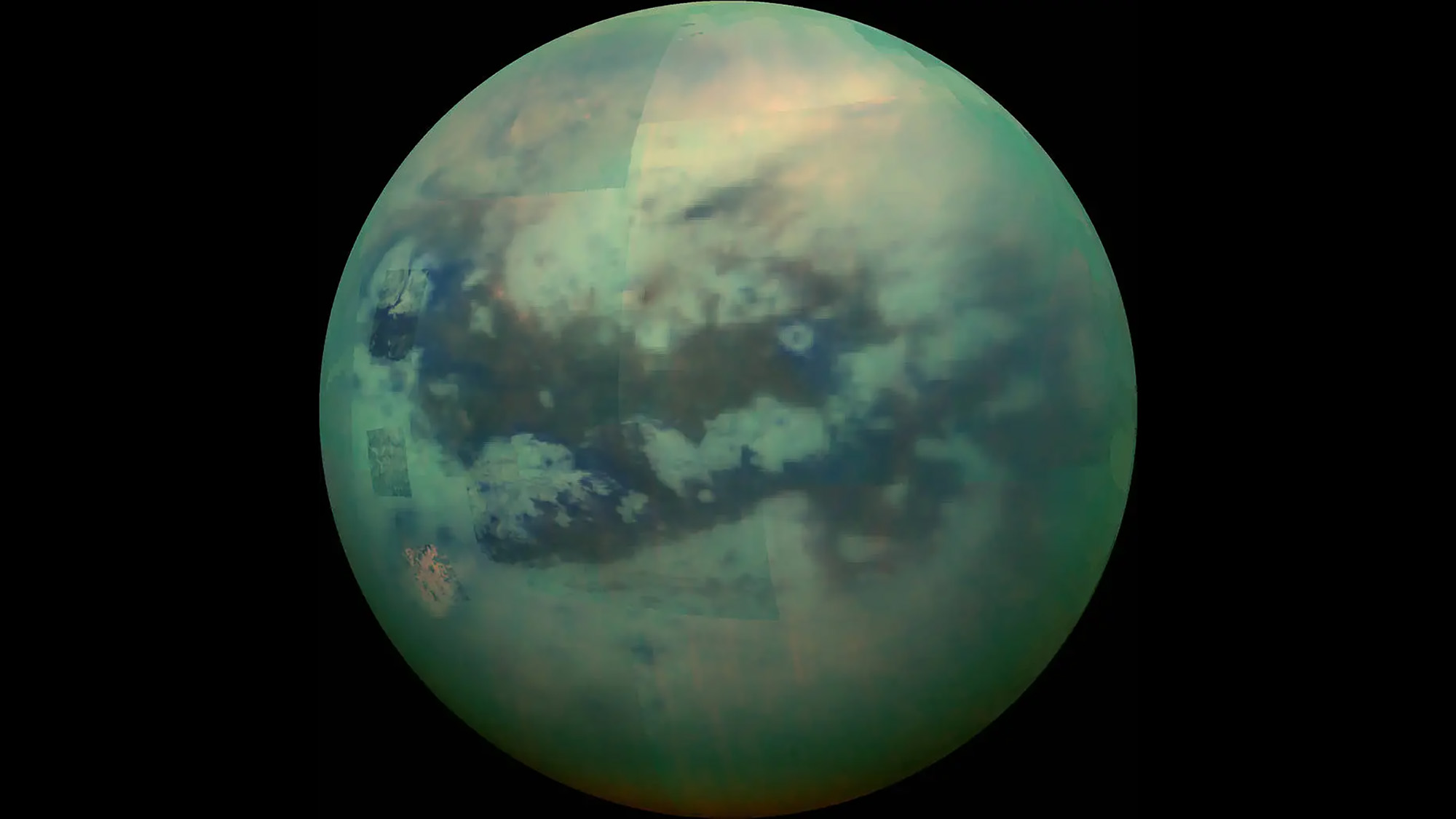

One of the most distinctive features of Titan, Saturn’s largest moon, is its geography–its surface is decorated with rivers, lakes, and seas. It’s the only other celestial body apart from Earth of which we know that has standing liquid on its surface, although the moon’s frigid climate—the average surface temperature is about -296.59 °F—means that it is far too cold for liquid water. Instead, Titan’s rivers and seas are filled with a mix of light hydrocarbons, mostly methane and ethane—and a new study suggests that those liquid bodies may play host to waves that have shaped their coastlines via erosion.
In 2017, the Cassini mission—a collaboration between NASA, the European Space Agency, and Italy’s ASI space agency—performed several fly-bys of Titan, capturing a wealth of data about the moon and its surface. Most exciting, it released the Huygens lander, which landed on the moon’s surface, making Titan the most distant object on which we’ve made landfall.

Despite Huygens’ visit to the moon’s surface and the decades’ worth of Earth-based study of Titan, there are still plenty of unanswered questions about the moon’s lakes and seas. One such question has been whether waves form on the surface of the moon’s lakes and seas. While wave formation has long been hypothesized, actual evidence has proven elusive.
Apart from the sheer distances involved—at closest approach, Saturn Is 746 million miles from Earth, and Titan is around 759,000 miles from Saturn—there are several other challenges involved in trying to make direct observations of Titan. There’s the moon’s thick atmosphere and characteristic haze; the fact that its distance from the sun means that it receives only 1% of the sunlight the Earth does; and the fact that wave activity may be affected by Titan’s seasons, which are significantly longer than those on Earth (each spans around seven and a half Earth years).
A new paper on the subject, published in Science Advances this month, sidesteps these challenges by examining the moon’s coastline and modeling the way in which it might have been shaped by wave activity. The authors “focus[ed] on distinctive morphologic signatures produced by two possible mechanisms of coastal erosion: wave-driven erosion and uniform erosion,”, and then compared the results of their modeling to the images provided by Cassini.

(A) Cassini SAR image of Ligeia Mare, Titan (NASA). (B) Fort Peck Lake, United States, a reservoir formed recently by flooding a landscape previously eroded by rivers [Map data: Esri World Imagery, Earthstar Geographics (58)]. (C) Lake Rotoehu, New Zealand, a lake in which flooded river valleys have been subsequently eroded by waves [Map data: Esri World Imagery, BOPLASS Ltd., Maxar (58)]. (D) Prošćankso Jezero, Croatia, a karst lake in which flooded river valleys have been eroded by dissolution [Map Data: Esri World Imagery, Maxar, Microsoft (58)]. Credit: ROSE V. PALERMO, et al.
The results of the experiment suggest that if the moon’s coastlines have been shaped by erosion in a similar way that water has shaped coastlines on Earth, then waves are the most likely explanation. The authors are careful to make it clear, however, that these results are not conclusive—they “do not prove that waves form on Titan,” a claim that would require direct observational evidence.
The study’s results also shed some light onto what such waves might be like—and in bad news for prospective cryogenic surfers, the waves on Titan would be pretty underwhelming. The combination of the slow wind speeds on Titan—a product of the moon’s thick nitrogen atmosphere—and the density and viscosity of methane and ethane mean that the average wave height would only be a few inches.
Despite their agreement with previous studies, these results came as something as a surprise to researchers, who describe the evidence of wave erosion as “somewhat unexpected.” This, in turn, suggests that larger waves might be lurking somewhere on the moon, perhaps whipped up by inclement weather that drives stronger winds, or that other as-yet-unidentified factors may also have contributed to the coastline formation—something that the paper suggests makes “the various landforms produced by coastal erosion … high-priority targets for future Titan orbiter and lander missions.”